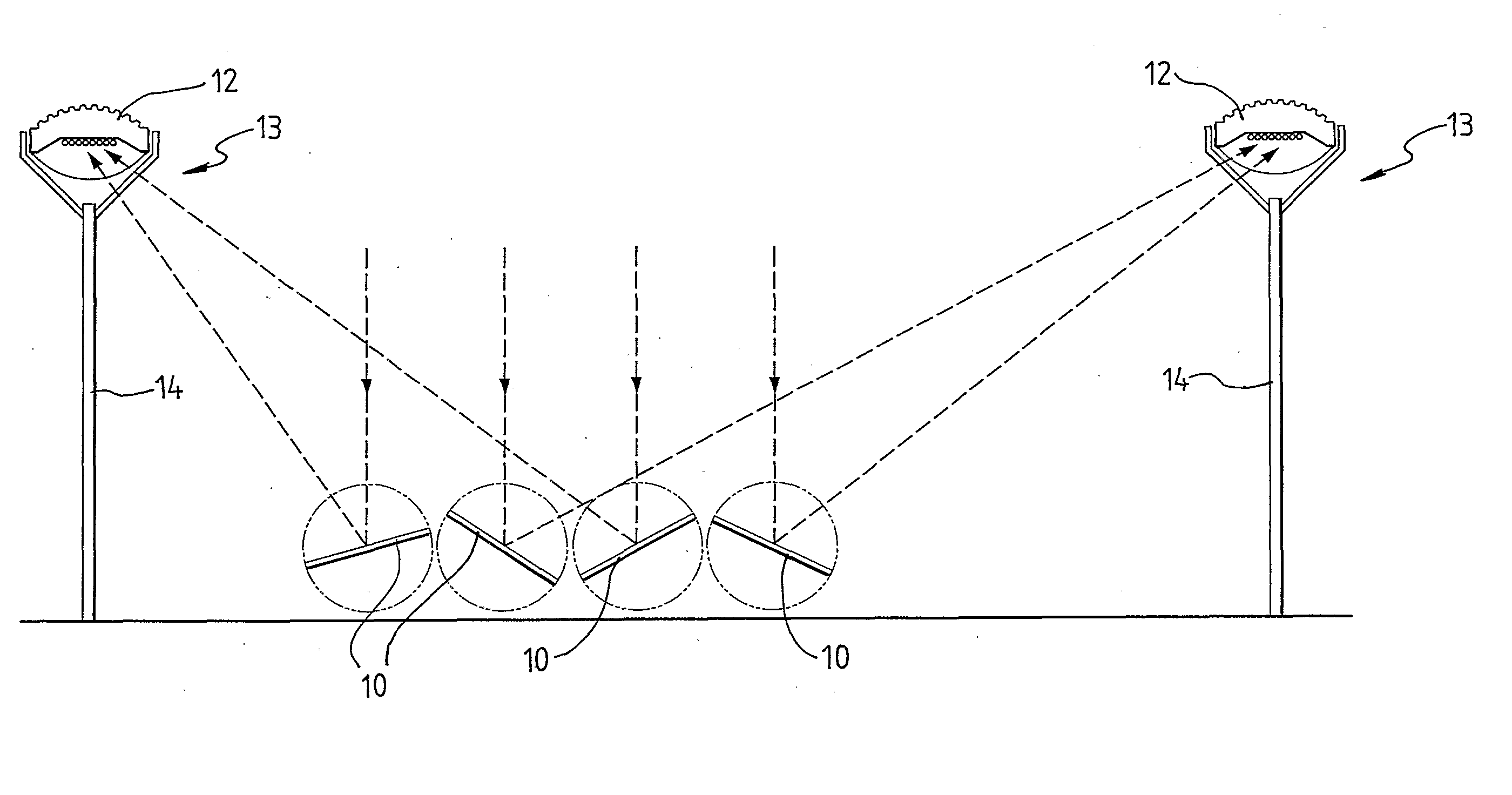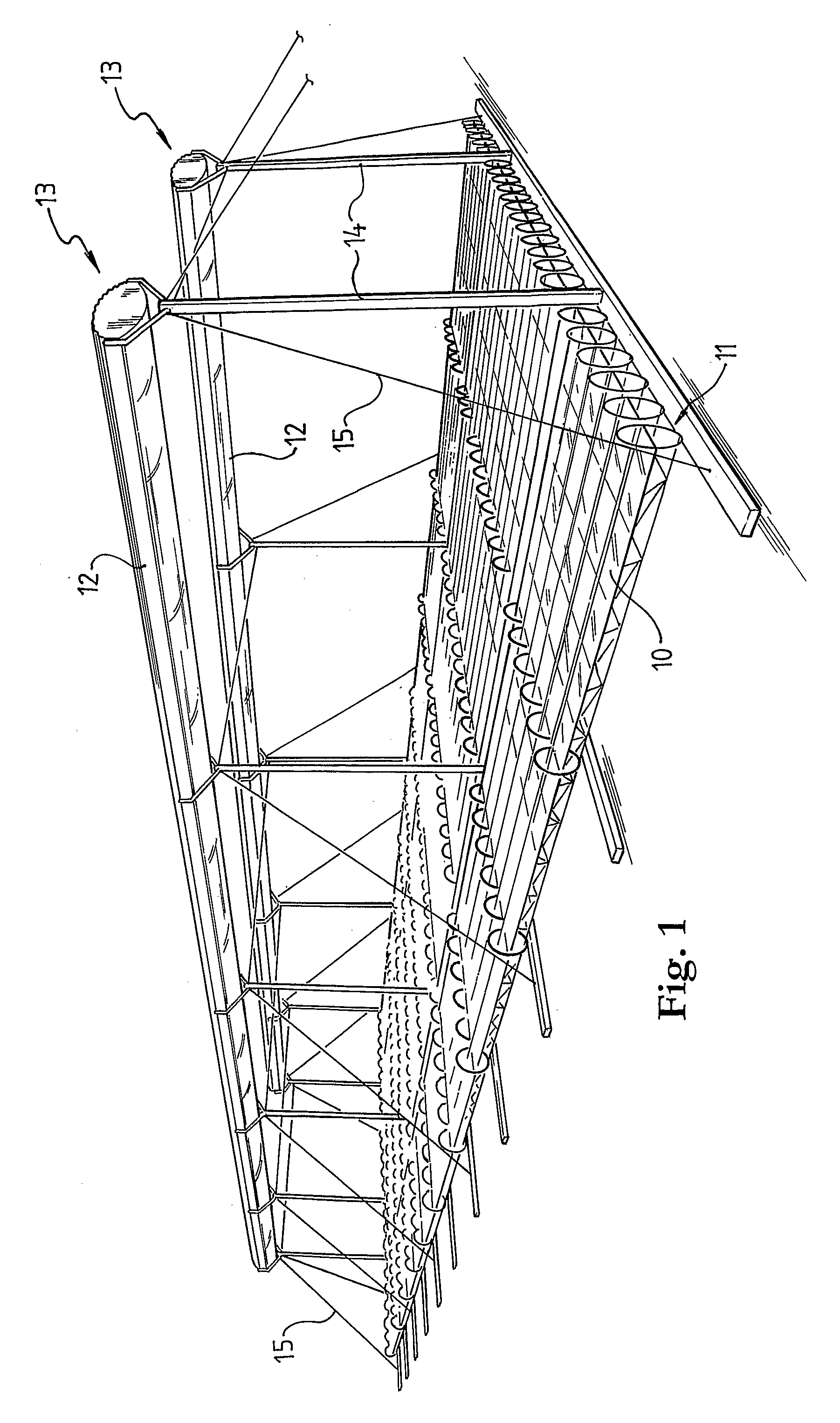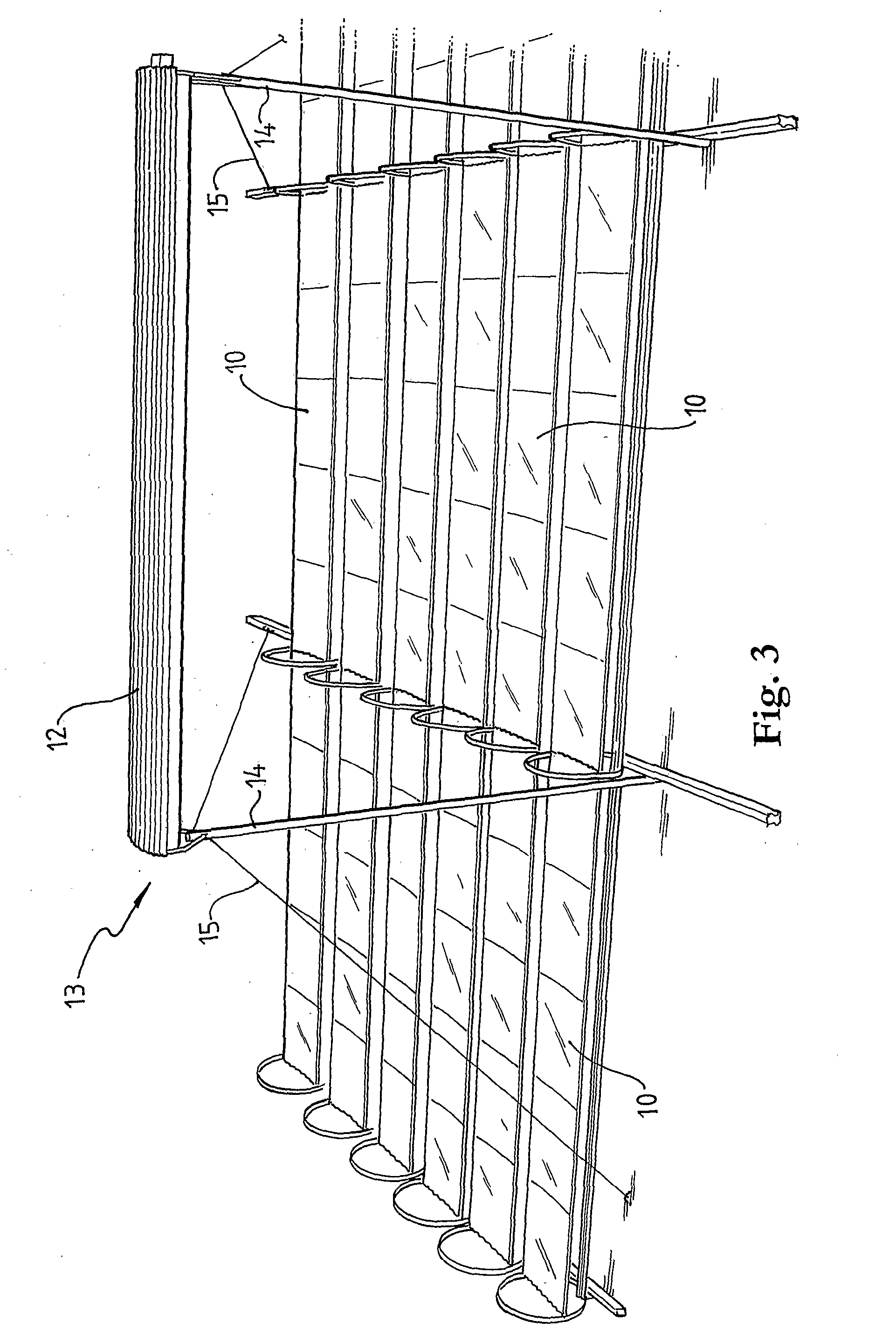Multi-tube solar collector structure
a solar collector and multi-tube technology, applied in solar heat collectors with working fluids, solar heat collectors for particular environments, solar-ray concentration, etc., can solve the disadvantage of loss occasioned by the need for multiple reflections, the collector system of the second group (i
- Summary
- Abstract
- Description
- Claims
- Application Information
AI Technical Summary
Benefits of technology
Problems solved by technology
Method used
Image
Examples
Embodiment Construction
[0024] As shown in FIGS. 1 to 3, the CLFR system comprises a field of ground mounted reflectors 10 that are arrayed in rows 11 and further comprises parallel collector systems 12, each of which is constituted by aligned collector structures 13. A complete CLFR system might occupy a ground area within the range 5×101 m2 to 25×106 m2 and the system as illustrated in FIG. 1 may be considered as a portion only of a larger CLFR system.
[0025] The reflectors 10 may be of the type described in co-pending International Patent Applications numbered PCT / AU2004 / 000883 and PCT / AU2004 / 000884, filed 01 Jul. 2004 by the present Applicant, and the disclosures of these Patent Applications are incorporated herein by reference.
[0026] The reflectors 10 are driven collectively or regionally, as rows or individually, to track movement of the sun (relative to the earth) and they are orientated to reflect incident radiation to respective ones of the collector systems 12, as shown schematically and by way ...
PUM
 Login to View More
Login to View More Abstract
Description
Claims
Application Information
 Login to View More
Login to View More - R&D
- Intellectual Property
- Life Sciences
- Materials
- Tech Scout
- Unparalleled Data Quality
- Higher Quality Content
- 60% Fewer Hallucinations
Browse by: Latest US Patents, China's latest patents, Technical Efficacy Thesaurus, Application Domain, Technology Topic, Popular Technical Reports.
© 2025 PatSnap. All rights reserved.Legal|Privacy policy|Modern Slavery Act Transparency Statement|Sitemap|About US| Contact US: help@patsnap.com



